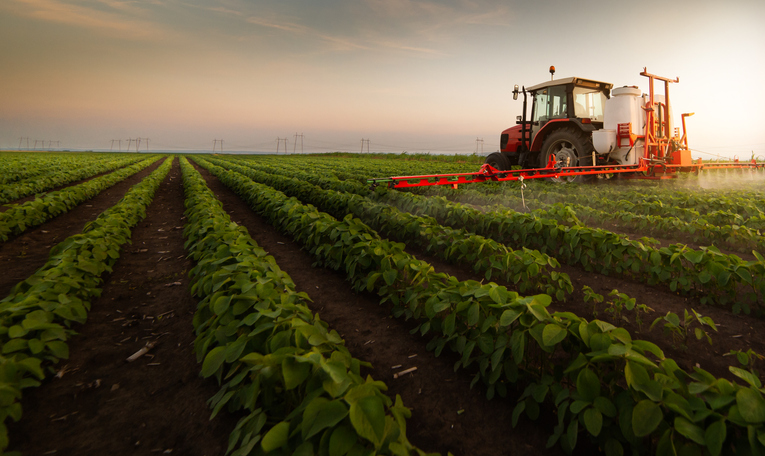The U.S. Department of Agriculture (USDA) announced an interim rule that will allow farmers to grow and market hemp.
Hemp is grown worldwide for textiles, bioplastics, rope, and other goods. The United States has imported finished hemp goods for many years. For nearly a century, growing any type of cannabis plant, including hemp, has been highly regulated by the federal government.
“In the 1930s, Congress began to tightly regulate the cultivation of all types of cannabis,” said Cameron Sholty, director of government relations at The Heartland Institute, which publishes Budget & Tax News. “Then, in 1970, Congress placed all varieties of cannabis on the schedule of controlled substances, or Schedule 1. Schedule 1 drugs are those that the Drug Enforcement Agency has determined have no medical value and a high potential for abuse, like heroin.”
Hemp has negligible levels of THC, or tetrahydrocannabinol, the psychoactive chemical in marijuana, Sholty says.
“While marijuana and hemp are both species of cannabis, hemp has no potential for abuse,” Sholty said.
Farm Bill Legalized Hemp
The Agriculture Improvement Act of 2018, passed by Congress and signed into law by President Donald Trump, effectively legalized hemp and allowed states to move forward with their own regulations, Sholty says.
“Congress was right to finally allow the cultivation and sale of hemp and hemp-derived products,” Sholty said. “Its legalization should pave the way for further research into products like CBD [cannabidiol], and hemp is a popular and unique alternative in the textile industry.”
The economy in many rural states has been lagging, and legalizing hemp cultivation might help to revive the farming sector, Sholty says.
“Many states have had traditionally robust agricultural economies, which have weathered increasing pressures from changing domestic consumer preferences and foreign producers,” Sholty said. “Hemp cultivation is a way to diversify agricultural production and products and can meet increasing consumer demand.”
State Debates Healthy
States should be free to set their own standards regarding hemp production, Sholty says.
“As a general rule of thumb, I support the ability of states to set policies that are in accord with their particular interests and in the interest of their own citizens,” Sholty said. “While it may be a cliché, it is nonetheless axiomatic: States should be the laboratories of our democracy.”
Attitudes toward regulated marijuana markets differ by state, Sholty says.
“There is a very healthy debate happening right now in the United States on the approach to sound cannabis policy, and I’m heartened to see that the debate is centered on state-based policy while the federal government’s position seems to be devolving regulations to the states,” Sholty said.
States Set Cannabis Policy
The federal liberalization of hemp laws reflects sound policy, Sholty says.
“Many states are crafting policies that are appropriate to their circumstances, incorporating lessons learned in states like California and Colorado, which were two early adopters of marijuana legalization,” Sholty said. “So, applying that model to hemp, its regulation and the cultivation policies in place in Michigan may not be a good fit in Montana.
“From a libertarian, right-of-center, free market perspective, of course I want to see fewer regulations and restrictions on the economy,” Sholty said. “Hemp and hemp-derived products are no exception.”
Benefits of Uniform Rules
The multiplicity of state rules regarding hemp cultivation has caused problems for interstate commerce in recent years, says Erica Stark, executive director of the National Hemp Association.
“States having different rules and regulations has been challenging over the past five years of pilot programs,” Stark said. “However, it is no longer true that states can set their own regulations. States can be more restrictive than the federal guidelines, but not less. It seems unlikely many states will choose to be more restrictive.”
The interim rules regarding hemp will benefit farmers in agriculture-heavy states, Stark says.
“We have already seen hemp benefiting farmers and creating jobs in states with robust hemp programs,” Stark said.
“We expect this trend to continue and grow exponentially, in particular when we see the infrastructure built for fiber processing and manufacturing is able to have a reliable supply chain to start producing consumer goods with hemp,” Stark said.
THC Concern
The USDA interim rule, passed in October, should be modified because it requires expensive monitoring of THC levels in the plants grown, Stark says.
“We would like to see the USDA regulations relaxed, specifically in the area of THC compliance testing, including acceptable variances, the way samples are taken, and removal of the requirement to have tests done by a DEA-certified lab,” Stark said.
The USDA rule does not address all the issues involved in hemp products that require Food and Drug Administration approval, Stark says.
“We are anxiously waiting for reasonable FDA regulations to provide a clear legal pathway and regulatory oversight of CBD products, including smokable flower,” Stark said.
The USDA interim regulation took effect immediately and will remain in place until a final rule is issued, or through November 1, 2021.
Internet Info
“Establishment of a Domestic Hemp Production Program,” Agricultural Marketing Service, U.S. Department of Agriculture, Document Number AMS–SC–19–0042; SC19–990–2; SC19-990-2 IR, October 31, 2019: https://www.heartland.org/publications-resources/publications/usda-establishment-of-a-domestic-hemp-production-program
Lindsey Stroud, “Research & Commentary: The Fiscal and Social Implications of Marijuana Legalization,” The Heartland Institute, June 1, 2016: https://www.heartland.org/publications-resources/publications/research–commentary-the-fiscal-and-social-implications-of-marijuana-legalization
